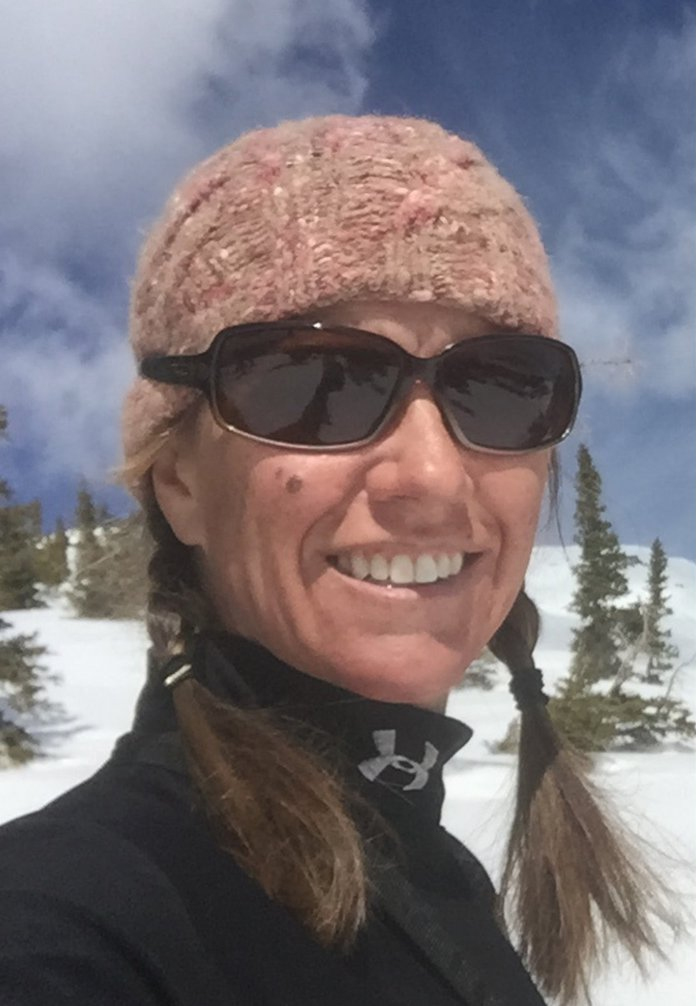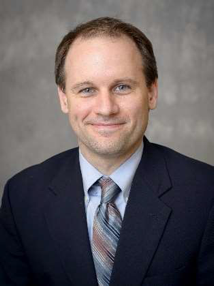Distinguished Lecture Series
December 10, 2021
Electrocatalytic Reduction of Nitrate in Drinking Water

Charles J. Werth, Ph.D.
Professor and Bettie Margaret Smith Chair in Environmental Health Engineering
University of Texas at Austin
Wednesday, November 17, 2021, 12 pm Mountain Time
Abstract
Nitrate is the most common pollutant in groundwater, and a seasonal surface water pollutant in agricultural regions. Nitrate can cause methemoglobinemia in infants and is converted to carcinogenic N-nitrosamines in the human body. It is regulated in drinking water at a maximum concentration limit (MCL) of 10 mg-N/L, and its first transformation intermediate nitrite is regulated at 1 mg-N/L. The go-to technology for nitrate removal in drinking water treatment is ion exchange, but it is relatively expensive and the discharged brine from regenerating the resin can harm the environment. Electrocatalytic nitrate reduction has emerged as a viable replacement for ion exchange. It uses an applied current to provide electrons that reduce nitrate without creating a waste product. While promising, technology advancement has been limited by concerns regarding poor current efficiency, selectivity for the dinitrogen end product over ammonia, catalyst longevity, and reactor mass transfer limitations. The first two concerns are related to cathodic design, which largely determines selectivity for nitrate reduction over the hydrogen evolution reaction, and selectivity for N-N pairing versus nitrogen hydrogenation. The second two concerns are related to reactor design and operation. This talk will present advancements in cathodic material and reactor design to advance electrocatalytic reduction of nitrate in drinking water treatment.
Bio
Dr. Werth is a professor and the Bettie Margaret Smith Chair in Environmental Health Engineering at the University of Texas at Austin. His research and teaching focus on the reactive transport of water pollutants in porous media, with applications in (electro)catalytic water treatment, groundwater remediation, and geological carbon sequestration. He is editor of Journal of Contaminant Hydrology, and previously served on the USEPA Science Advisory Board. He received his BS degree in mechanical engineering from Texas A&M University, and MS and PhD degrees in environmental engineering from Stanford University.
March 3, 2021
Snowmelt to Streamflow: The Importance of Groundwater in Mountain Hydrology

Rosemary W.H. Carroll, Ph.D.
Associate Professor in Hydrology
Desert Research Institute
Wednesday, March 3, 2021, 12:00 pm Mountain Time
Abstract
The challenge of quantifying snow distribution and snowmelt at the watershed-scale, along with the close coupling of water inputs to vegetation structure and topography, further complicates our conceptual understanding of hydrologic partitioning.
To address these challenges, researchers combine snow observations across spatial and temporal scales with chemical and isotopic observations, groundwater gas tracers, and a multi-decadal integrated hydrologic model of a Colorado River headwater basin.
With this combined observation and modeling framework, the research seeks to answer the following questions:
- How important is groundwater flow to mountain streams?
- What are the first-order controls on groundwater recharge?
- How old is baseflow?
Lastly, research will touch on monsoon rains and their effect on streamflow as a function of the antecedent snow season.
Bio
Dr. Rosemary W.H. Carroll received her undergraduate degree in Physics from Bates College in Maine; and her MS and PhD from the University of Nevada, Reno in Hydrology. She works for the Desert Research Institute as an Associate Research Professor in Hydrology with a current research focus on watershed hydrology of mountain systems. While based in Reno, NV, she lives in Crested Butte, CO and will present work on the East River near her home and which is the field site of the Lawrence Berkeley National Laboratory Watershed Function Science Focus Area.
October 7, 2020
After Drinking Water Contamination Disasters, is Policy Enough to Protect Public Health?

Andrew J. Whelton, Ph.D.
Associate Professor
Lyles School of Civil Engineering Division of Environmental Engineering
Purdue University
Wednesday, October 7, 2020, 12:00 pm Mountain Time
Abstract
Disasters like floods, hurricanes, wildfires, and chemical spills can damage drinking water distribution systems and building plumbing, jeopardizing fire-fighting, public health, and economic recovery. Following a disaster, water use restrictions are sometimes issued to discourage populations from coming into contact with the potentially harmful water. Water distribution system and building plumbing testing and repairs are necessary. Lessons from past disasters will be described regarding the 2017 Tubbs Fire and the 2018 Camp Fire in California. Results from ongoing wildfires in the American West will also be discussed. A key challenge with post-disaster response is the lack of federal statutes that explicitly require state, county, local agencies, water system owners, and operators to notify the public about contaminated water, guide the design and conduct of testing regimes to determine whether contamination exists and has been removed, and support impacted households during recovery. Insights about how federal, state, and local policies and decisions can be informed, better developed, and implemented to lessen the health and economic risks will be described.
Bio
Professor Whelton has 20 years of experience in the infrastructure, public health, and environmental areas. He is nationally recognized for water infrastructure disaster response and recovery among other expertise. His teams have been called to help respond to and recover from widespread water distribution and building plumbing contamination in response to the 2014 MCHM chemical spill, 2017 Tubbs Fire, 2018 Camp Fire, and others. Prof. Whelton previously worked for the U.S. Army, private sector, National Institute for Standards and Technology (NIST), and University of South Alabama. He earned B.S. Civil Engineering, M.S. Environmental Engineering, and Ph.D. Civil Engineering degrees from Virginia Tech.
